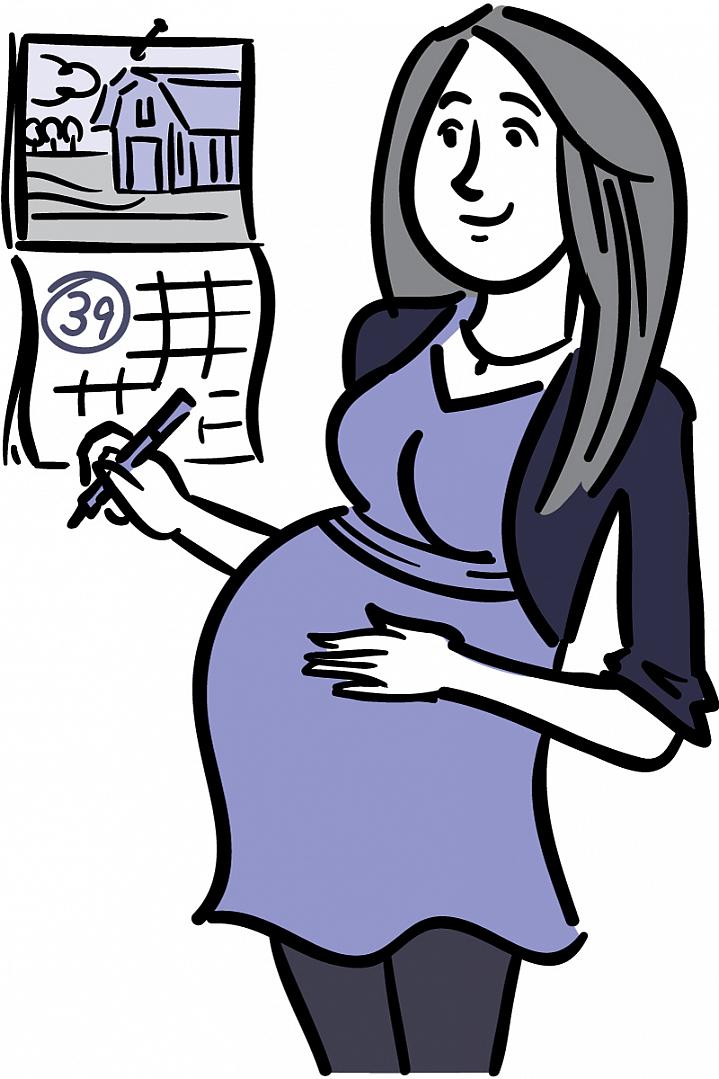Let Baby Set the Delivery Date
Wait Until 39 Weeks if You Can

We tend to think of pregnancy as lasting for 9 months. But ideally it should last for nearly 10 months. Research shows that babies are born healthier if they have at least 39 weeks to grow in the womb.
In recent years, there’s been a trend toward earlier deliveries, as more women are choosing the date they’ll give birth. This is known as an elective delivery. Studies suggest that the number of elective deliveries rose dramatically from 1990 to the mid-2000s.
If there’s a particular medical reason to deliver early, then it’s best not to wait, says Dr. Catherine Spong, a pregnancy expert at NIH. “But if the mother and baby are healthy, there’s no benefit to delivering the baby early,” she says. In fact, delivering early can create lasting health problems. Even women of advanced maternal age, older than 35, should wait until at least 39 weeks unless there are medical reasons to deliver early.
“We’ve gotten to the point where people feel they can choose the timing of their delivery,” says Spong. “But in reality, that baby, in the last 4 weeks of pregnancy, is doing a huge amount of developing.”
Those last few weeks can make a big difference. At 39 to 40 weeks of pregnancy, a baby’s brain weighs one-third more than it does at 35 weeks. The lungs and liver also continue to develop up to 39 weeks. And those last few weeks allow time for layers of fat to grow under the baby’s skin, which helps keep the infant warm after birth.
Studies have found a greater risk of serious medical complications—such as dangerous bloodstream infections and breathing and feeding problems—in babies born before 39 weeks of gestationThe time from conception to birth.. “While there are risks to every pregnancy, the risks to the baby are higher if all organs are not completely developed,” Spong says.
One NIH-funded study looked at more than 13,000 women who gave birth by elective cesarean delivery(C-section) — Surgery to deliver a baby through the mother’s abdomen. (C-section) at 37 weeks or later. The babies delivered at 37 weeks were twice as likely as those born at 39 weeks to have complications—such as difficulty breathing, heart problems and seizures—that usually require time in a neonatal intensive care unit.
Moms who choose to give birth early may also face their own health challenges. They have a greater chance of postpartum (after childbirth) depression; stronger, more frequent contractions during labor; and an increased chance of needing a C-section. Women who have a C-section have a greater risk of infection and a longer recovery time than women who’ve had a vaginal birth.
“Know the true due date of pregnancy and get prenatalBefore birth or during pregnancy. care early,” Spong advises.
A woman’s body will go into labor when the baby is ready to enter the world, she says. “By letting that baby get born at term, you’re improving the lifelong health of that baby.”
NIH Office of Communications and Public Liaison
Building 31, Room 5B52
Bethesda, MD 20892-2094
nihnewsinhealth@od.nih.gov
Tel: 301-451-8224
Editor: Harrison Wein, Ph.D.
Managing Editor: Tianna Hicklin, Ph.D.
Illustrator: Alan Defibaugh
Attention Editors: Reprint our articles and illustrations in your own publication. Our material is not copyrighted. Please acknowledge NIH News in Health as the source and send us a copy.
For more consumer health news and information, visit health.nih.gov.
For wellness toolkits, visit www.nih.gov/wellnesstoolkits.



